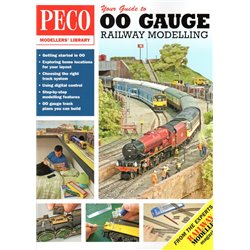Static grass puffer bottles work by manually charging model grass fibres with static electricity. When the charged...
No products
Product successfully added to your shopping cart
There are 0 items in your cart. There is 1 item in your cart.
Search Tips
Why is the UK railway scale called 00?
The UK railway scale is called 00 gauge (pronounced "double-O") due to its origins as a smaller alternative to the existing 0 gauge (zero gauge), which was widely used in model railways during the early 20th century. This naming convention reflects its development as a reduced version of the larger 0 gauge, allowing for more compact layouts suitable for smaller spaces.
In the 1920s, model railways were becoming increasingly popular, but the larger 0 gauge, with its 32 mm track width and a scale of 1:43.5, required substantial space to build a layout. Manufacturers in Britain, particularly Hornby, recognised the need for a more practical option. By introducing 00 gauge, which used a narrower track gauge of 16.5 mm, they created a system that allowed enthusiasts to build layouts in more modest spaces, such as the typical British home.
Interestingly, while 00 gauge shares the same 16.5 mm track width as H0 gauge (Half-0 gauge), which is popular worldwide, it differs in scale. 00 gauge models are built to a scale of 1:76, meaning they are slightly larger than their H0 gauge counterparts, which are at a scale of 1:87. This scale difference arose because British locomotives and rolling stock are smaller than those found elsewhere, and using the smaller H0 scale made it difficult to fit motors and mechanisms into the models at the time.
The term "double-O" was chosen to signify this new, smaller gauge while maintaining a connection to the established 0 gauge. It became the dominant scale in the UK, reflecting its practicality and its compatibility with the British context. Today, it remains the most popular railway modelling scale in Britain, providing an ideal balance between detail and layout size.
By adopting 00 gauge, British model railway enthusiasts gained a system that fit the constraints of their homes without sacrificing the charm and detail of the models. Its unique place in railway modelling history highlights the innovation required to make the hobby more accessible while preserving its appeal.
Click here to receive the tips weekly in your mailbox. You can unsubscribe at any time.








